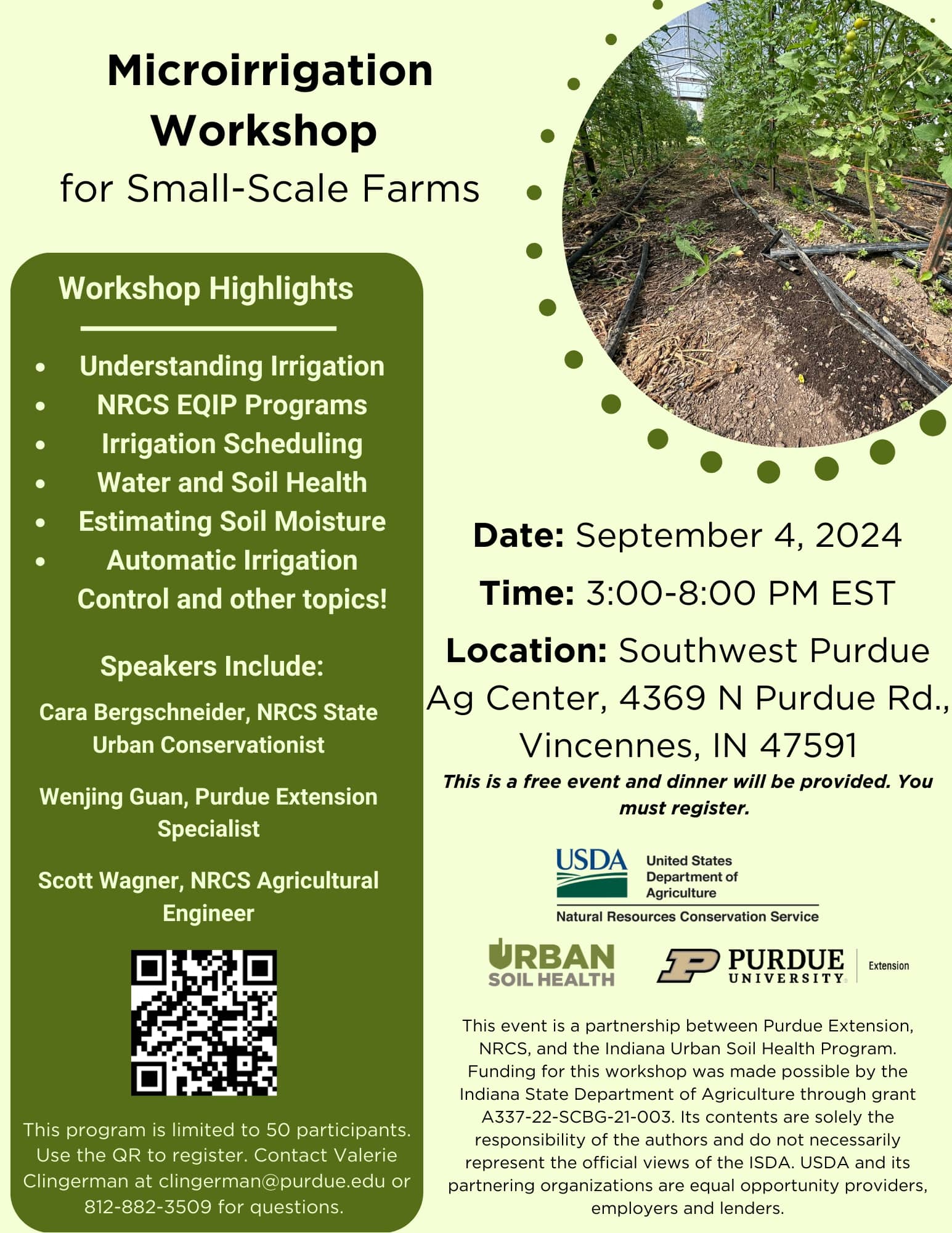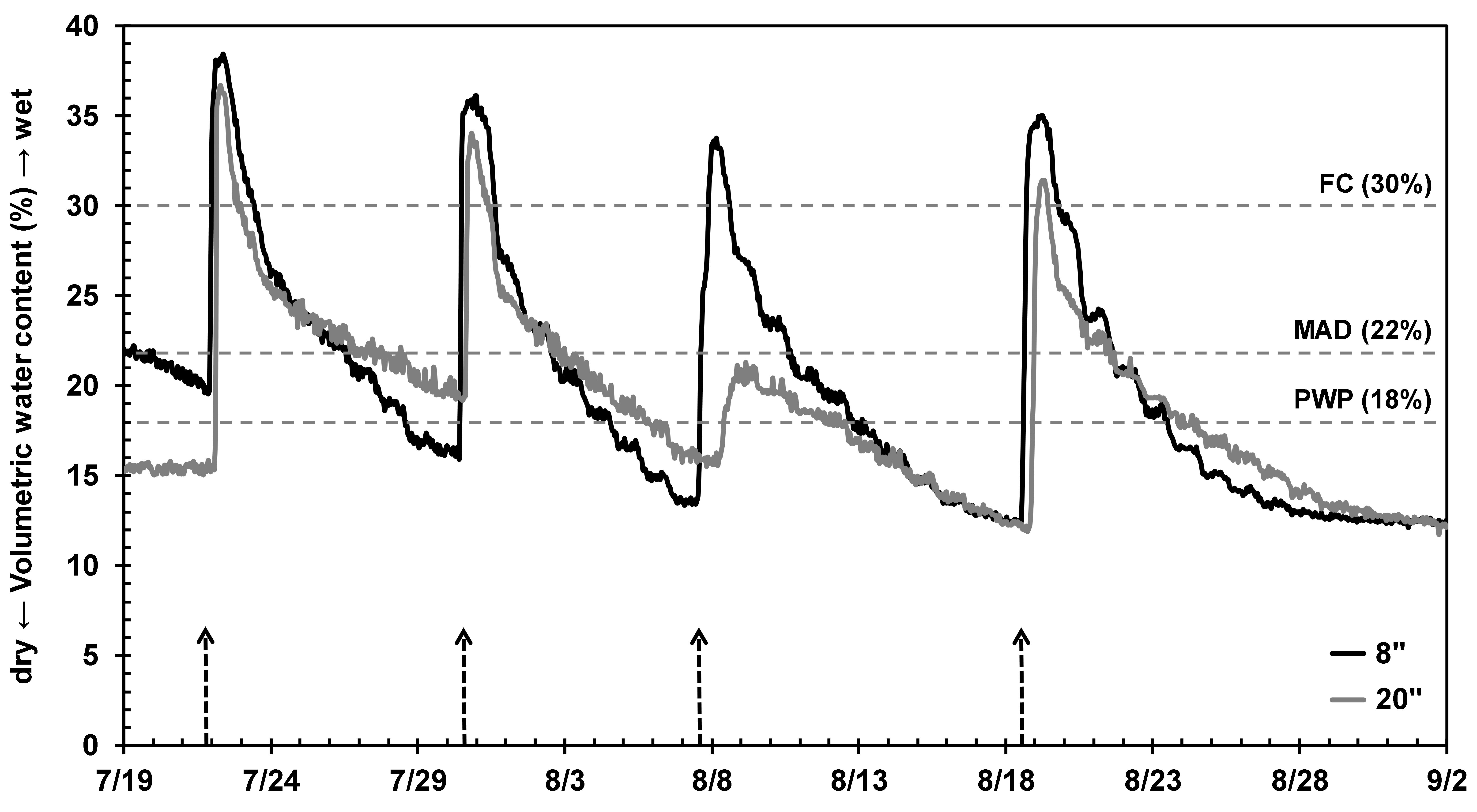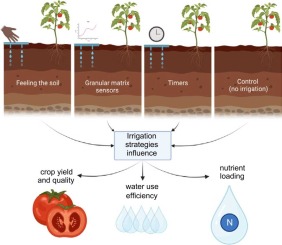Have you ever wondered why some gardens thrive while others struggle? The secret often lies beneath the surface — in the soil’s moisture levels and the timing of irrigation.
Understanding these two elements can transform your gardening experience, turning your backyard into a flourishing oasis. When you grasp the importance of soil moisture and how to perfectly time your irrigation, you unlock the potential for healthier plants and more bountiful harvests.
This knowledge doesn’t just benefit your plants; it saves you time, water, and money. Are you ready to discover how to optimize your watering routine for maximum growth and minimal waste? Keep reading to uncover the secrets that could change the way you garden forever.

Soil Moisture Basics
Grasping soil moisture fundamentals is key for effective irrigation. Proper timing prevents water wastage and ensures plant health. Monitoring moisture levels aids in optimizing growth and conserving resources.
Understanding soil moisture is crucial for effective irrigation and plant health. It’s not just about watering your garden; it’s about knowing when and how much to water. Soil moisture basics help you make informed decisions about irrigation timing. Imagine your plants thriving because you understand their needs better. This section will guide you through the essentials of soil moisture, empowering you to optimize your watering strategies.What Is Soil Moisture?
Soil moisture refers to the amount of water held in the soil. It’s like the reservoir from which plants draw their daily hydration. Different soil types hold varying amounts of water. Sandy soil drains quickly, while clay soil retains moisture longer. Understanding your soil type can help you manage water effectively.Why Is Soil Moisture Important?
Adequate soil moisture is essential for plant growth. It influences nutrient absorption and root development. Too little moisture can lead to wilting and poor growth. Excess moisture can cause root rot. Striking the right balance is key to healthy plants. Consider your garden’s specific needs and adjust accordingly.How Can You Measure Soil Moisture?
Measuring soil moisture doesn’t require expensive equipment. Simple tools like a soil moisture meter can provide quick readings. Alternatively, dig a small hole and feel the soil. If it’s crumbly, it may be too dry. If it’s sticky, it might be too wet. Observing plant leaves can also give clues about moisture levels.Personal Experience: Finding The Right Balance
I once overwatered my garden, thinking more water meant healthier plants. Instead, I faced yellow leaves and stunted growth. By understanding soil moisture basics, I learned to water less frequently but more effectively. It’s about timing and quantity, not just frequency. Have you ever adjusted your watering routine and noticed a difference?Practical Tips For Monitoring Soil Moisture
Regularly check your soil’s moisture level. Use a moisture meter for accuracy or trust your senses with the touch test. Keep an eye on weather patterns; rain can naturally adjust moisture levels. Be mindful of plant types as some, like succulents, need less water. Can you think of a plant that might need more attention in your garden? Understanding soil moisture basics equips you with the knowledge to care for your plants efficiently. It’s about fostering an environment where your garden can flourish with the right amount of hydration. Are you ready to make your garden thrive with informed irrigation decisions?Importance Of Irrigation Timing
Understanding the importance of irrigation timing can greatly enhance plant health. Proper timing ensures plants get the right amount of water. This leads to robust growth and reduces water waste. Poor timing can cause overwatering or underwatering, affecting plant vitality. By optimizing irrigation schedules, gardeners can achieve healthier landscapes.
Why Timing Matters For Plant Growth
Irrigation timing affects the amount of water plants receive. Early morning watering is ideal. It allows water to soak in before heat evaporates it. This timing supports strong root systems. It also reduces the risk of fungal diseases.
Impact On Water Conservation
Proper irrigation timing helps conserve water. Watering during cooler parts of the day minimizes evaporation. This approach ensures more water reaches plant roots. It also lowers water bills and promotes sustainable gardening.
Effects On Soil Health
Timing influences soil moisture levels. Consistent schedules prevent soil from becoming too dry or too soggy. Balanced moisture maintains soil structure and fertility. Healthy soil supports plant growth and nutrient uptake.
Reducing Pest And Disease Risks
Incorrect watering times can attract pests and diseases. Wet foliage in the evening invites mold and mildew. Morning watering keeps leaves dry. This reduces the likelihood of fungal infections.
Adapting To Weather Conditions
Weather changes affect irrigation timing. Rainy days might reduce the need for extra watering. Hot, dry conditions may require more frequent irrigation. Adjusting schedules helps maintain optimal soil moisture levels.
Technologies For Monitoring Soil Moisture
Understanding soil moisture is crucial for effective irrigation. Farmers need precise data to manage water usage. Modern technology offers various tools for this purpose. These tools help monitor soil moisture accurately. They assist in scheduling irrigation at the right time. Let’s explore some technologies for monitoring soil moisture.
Soil Moisture Sensors
Soil moisture sensors measure water content in soil. They provide real-time data. These sensors are placed in the ground. They send data to a central system. Farmers can access this information easily. This helps them make informed irrigation decisions. Using these sensors saves water and boosts crop yield.
Remote Sensing Technology
Remote sensing uses satellites and drones. It gathers data from above. These images give insights into soil moisture levels. They cover large areas quickly. Farmers can see moisture variations in their fields. This information aids in planning irrigation schedules. Remote sensing is efficient and covers vast regions.
Data-driven Irrigation Systems
Data-driven systems use algorithms. They analyze soil moisture data. These systems suggest optimal irrigation times. Farmers receive alerts through apps or messages. This ensures timely and precise watering. It reduces water wastage and increases efficiency.
Internet Of Things (iot) In Agriculture
IoT connects devices to the internet. In agriculture, it links sensors, weather stations, and irrigation systems. This integration allows real-time monitoring. Farmers get instant updates on soil conditions. IoT helps automate irrigation processes. It leads to better resource management and crop health.
Mobile Applications For Soil Monitoring
Many mobile apps track soil moisture. These apps sync with sensors and systems. Farmers can check moisture levels on their phones. Apps provide visual data and recommendations. They simplify monitoring and decision-making. Using apps makes soil management more accessible and effective.

Best Practices For Effective Irrigation
Irrigation is a vital practice that ensures your plants receive the right amount of water at the right time. But how do you know when and how much to water? By understanding soil moisture and implementing best practices for effective irrigation, you can maintain a thriving garden or farm. Let’s dive into some actionable insights.
Monitor Soil Moisture Regularly
Invest in a reliable soil moisture meter. This tool will help you gauge the moisture level in your soil, allowing you to water only when necessary. Have you ever watered your plants just because the surface looked dry? A meter gives you a clearer picture of what’s happening below the surface.
Checking soil moisture manually is also a practical approach. Stick your finger into the soil about two inches deep. If it feels moist, hold off on watering. This simple method can save you from overwatering, which can lead to root rot and wasted resources.
Time Your Watering Sessions
Early morning is often the best time to water. The cooler temperatures reduce evaporation, ensuring more water reaches your plants. This method mimics natural dew, offering a refreshing start to your plants’ day.
Watering in the evening is another option, but be cautious. While it reduces evaporation, it can increase the risk of fungal diseases if leaves remain wet overnight. Timing is everything. Consider the local climate and adjust your schedule accordingly.
Tailor Irrigation To Plant Needs
Different plants have varying water requirements. Group plants with similar needs to optimize water use. Roses, for instance, prefer deeper watering sessions, while succulents thrive with less frequent care.
Understanding plant-specific needs prevents over or underwatering. This knowledge also helps in planning a garden layout that ensures efficient irrigation. Have you considered grouping thirsty plants together to save time and resources?
Choose The Right Irrigation System
Drip irrigation systems are a favorite for precise watering. They deliver water directly to the root zone, minimizing waste. If you’ve ever struggled with uneven watering, this system might be the solution.
Sprinklers are versatile but can lead to water wastage if not monitored. Ensure they are properly positioned and adjusted to target specific areas. Which system suits your garden best? Reflect on the size, plant types, and water availability.
Adjust For Seasonal Changes
As seasons change, so do your irrigation needs. During hot summer months, more frequent watering might be necessary. In contrast, cooler months may require less attention.
Keep an eye on weather forecasts. Rainfall can naturally hydrate your garden, reducing the need for artificial watering. How do you plan to adapt your irrigation strategy this season?
By adopting these best practices, you can ensure effective irrigation that promotes healthy plant growth. What’s your biggest challenge in managing irrigation? Share your thoughts and let’s learn together.

Conclusion
Understanding soil moisture and irrigation timing is essential for healthy plants. Proper timing prevents water waste and promotes growth. Monitor soil moisture regularly to maintain ideal conditions. This practice supports efficient water usage, especially in dry areas. Adjust irrigation based on weather changes and plant needs.
Consistent care ensures thriving gardens and crops. Remember, a little attention goes a long way. Use these insights to optimize your garden’s health. Enjoy the benefits of well-timed watering. It leads to more robust and vibrant plants. Happy gardening!

